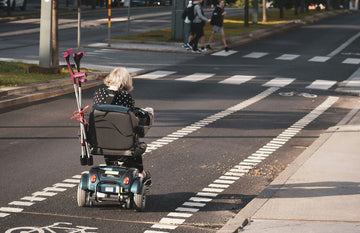If you or a loved one has experienced a traumatic brain injury (TBI), it can have a significant impact on functioning and wellbeing. In some cases, it can even lead to disability. This post will go over some common symptoms of TBI that may make it difficult to participate in aspects of everyday life.
First of all, what is a traumatic brain injury? This phrase refers to any brain injury that was caused by an external force. Some TBIs involve penetration of the skull and brain, while others do not.
Traumatic brain injuries can cause a wide range of physical, cognitive, behavioral, and physiological symptoms. The extent of the symptoms and their severity can vary dramatically from patient to patient. It depends on the nature of the injury, as well as the patient’s age and health.
Below, we go over common TBI symptoms. Keep in mind that not every patient will experience every symptom.
Some cognitive symptoms of TBIs may include:
- Difficulties with memory
- A hard time concentrating
- Confusion
- Difficulties solving problems
- Challenges with speech, language and communication
- Other cognitive challenges
These cognitive issues can make life harder at home and also at work.
Some of the physical symptoms that can result from a TBI include:
- Difficulties maintaining balance
- Dizziness
- Fatigue
- Nausea
- Vision problems
- Hearing problems
- Decreased endurance
- Spastic muscles
- Weak muscles
- Foot drop
- Pain
These problems can particularly affect walking, though some of the cognitive changes we mentioned can as well.
Another area where a TBI can lead to symptoms is with respect to behavior. Some examples include:
- Changes in emotion
- Loss of inhibitions
- Impulsive behavior
- Aggressive behavior
It can be challenging to maintain relationships at home and at work when dealing with these social challenges. There are not a lot of valid medical explanations for increased aggressive behaviors, but TBI really can lead to this.
Here are some physiological changes and symptoms that can result from a TBI:
- Changes in sleeping patterns
- Changing in eating patterns
- Headaches
- Hormonal imbalances
- Bladder problems
- Bowel problems
- Dizziness
- Fatigue
- Respiratory problems
- Changes in heart rate
- Perception changes
To improve your safety and quality of life following a TBI, consider making the following enhancements to your home.
- Ramps for wheelchair or mobility aid access: If you are having difficulties walking, ramps can help you move around your home in a wheelchair.
- Handrails on both sides of steps: This can increase your safety as you go up or down the stairs.
- Motion-sensor lighting: This can help ensure that you can see well in what would otherwise be dark conditions.
- Non-slip surfaces on walkways: These will help to reduce the chances of falls and further injuries.
- Widened doorways: Widening one’s doorways allows one to pass through with a walker or a wheelchair.
As you are walking to retrain your gait and recover from your TBI, you will need to wear therapeutic footwear that helps you stay safe.
Cadense footwear, such as our shoes for stroke patients and our shoes for seniors, makes an ideal choice.
These shoes feature patented variable friction technology, which helps the feet to “glide” across uneven surfaces, even if a patient suffers from foot drop.
Other features of these shoes that can help TBI patients include a wide, stable base, ample cushioning, and lightweight, non-fatiguing materials. The shoes are also designed to be easy to put on and take off, without complex laces or buckles.




![[color: white] Original Women's Adaptive Shoe](http://cadense.com/cdn/shop/files/Womens-WHT-T1-LG.jpg?crop=center&height=300&v=1765381322&width=300)
![[color: black] Original Men's Adaptive Shoe](http://cadense.com/cdn/shop/files/Mens-BLK-T1-LG.jpg?crop=center&height=300&v=1765338442&width=300)




